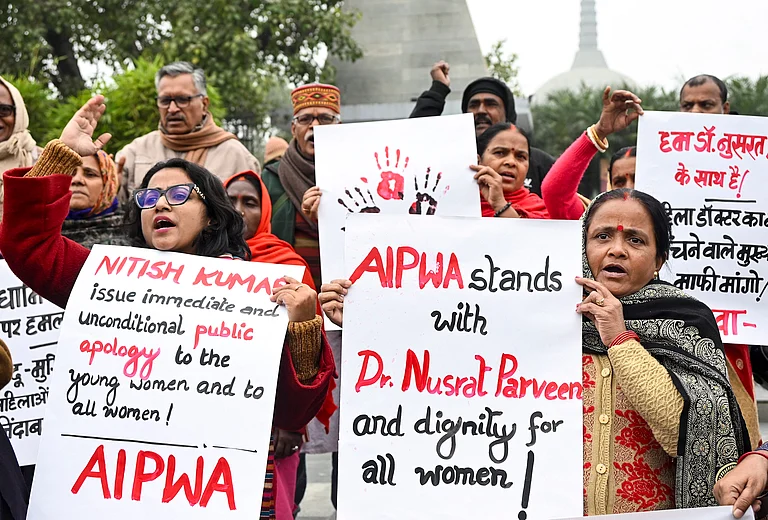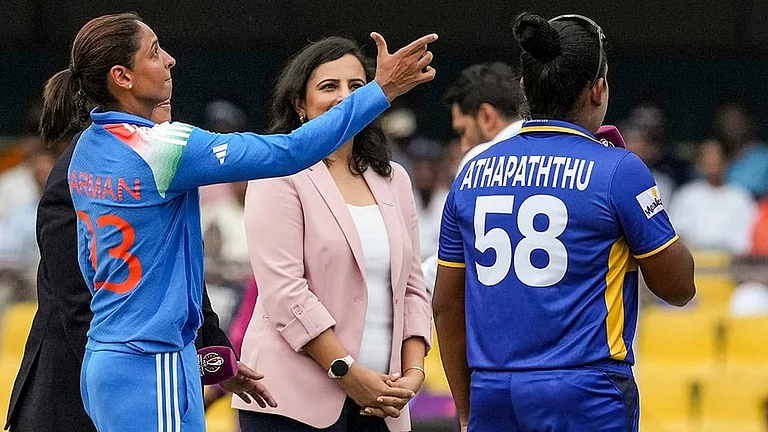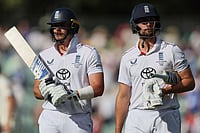On the afternoon of December 26,2007, Mrs.Benazir Bhutto addressed a publicmeeting at the Arbab Niaz Stadium in Peshawar. At 10-30 AM, a crude improvisedexplosive device (IED) fitted with a timer exploded in the Jinnah IslamiaCollege, adjacent to the Stadium. The IED had been placed in the sewage near oneof the entrances to the Stadium. There were no casualties. The Police stepped upthe anti-explosive checks in the Stadium. They detained one Rahim Islam, a15-year-old villager from Matani, as he was about to enter the Stadium beforeher arrival. They found in his possession 450 grams of an explosive material,but he did not have a detonator or batteries. The public meeting went offsmoothly. At the end of the day, before proceeding to Rawalpindi, Benazirexpressed her unhappiness over the inadequate security arrangements for her.
Her public election meeting at the Liaquat Bagh in Rawalpindi was fixed for11-30 AM on December 27,2007. By that time, apart from the office-bearers of herPakistan People's Party (PPP), there was hardly any audience at the venue. ThePPP office-bearers advised her to delay her arrival. By 3 PM, the venue was onlyone-third full. Ever since she returned to Pakistan from her political exile onOctober 18,2007, the public response at her election meetings was poor. This waspartly due to fears of a terrorist strike after what happened at Karachi onOctober 18,2007, when about 150 civilians and security staff died during anunsuccessful attempt to kill her through a suicide bomber and partly due todisenchantment over her reported deal with President Pervez Musharraf and theUS. Even though the venue was two-thirds empty even by 3 PM, the office-bearersdecided to start the meeting, since it had to be concluded before sunset. Therewere the usual security checks, including anti-explosive checks carried out bythe Rawalpindi Police as well as the private security staff of the PPP hired byMr.Rahman Malik, a retired senior police officer,who was co-ordinating hersecurity. Malik was personally present at the public meeting venue toco-ordinate with the Rawalpindi Police and to supervise the security staff ofthe PPP.
Benazir reached the venue after the other office-bearers of the PPP hadaddressed the audience. She finished her speech by 5-15 PM. Before Benazirreturned from exile on October 18,2007, her party had imported two armour-platedLand Cruisers, with a sunroof, for her use. She used to travel in one with someclose associates. The other used to follow her with an escort party of the PPP.The idea was that if one vehicle broke down, she could get into the secondvehicle. Moreover, whenever she made any unscheduled stop, the members of theescort party would get out and keep an eye on the people gathered for anysuspicious movement. It is alleged that after the public meeting was over, asBenazir was taking leave of her party officials, Malik got into the secondarmour-plated vehicle and went to Zardari House in Islamabad, where she wasstaying, without following Benazir. When he left, the other members of the PPPsecurity staff and the Rawalpindi Police also allegedly left. Benazir was leftalone with two bodyguards hired by her party.
She got into her Land Cruiser along with Maqdoom Amin Fahim, the Vice-Chairmanof her party,Mrs.Naheed Khan, her trusted political adviser, and her husband, DrSafdar Abbasi, Major Imtiaz, a retired army officer, who used to drive her LandCruiser, and the two PPP bodyguards. As the vehicle came out of the venue on tothe College Road, there was a group of people standing there shouting sloganspraising her. Since they had not attended the public meeting, they had not beensubjected to security checks. Benazir asked Imtiaz to stop the vehicle and cameout of the sunroof to greet them. The body-guards got out of the car. They didnot apparently notice a man in the group taking out a revolver and firing ather. She collapsed inside the car. There was an explosion. The body-guards werekilled before they could get into the car. The armour-plates of the Land Cruiserwithstood the impact of the explosion. None inside suffered any injury. However,the tyres of the vehicle could not withstand the impact. All of them blew up.Despite this, Imtiaz tried to drive away. After a few hundred feet, he wasunable to manoeuvre the vehicle. It got immobilised on the road with Benaziralmost lifeless and bleeding profusely inside.
Among the vehicles which escaped the explosion was a Prado Jeep of the PPP,which was being used by Mrs. Sherry Rehman, the Information Secretary of thePPP. The occupants of the Land Cruiser transferred her into the Prado and droveher to the hospital. In the meanwhile, it is alleged, Malik and other PPPsecurity staff reached the Zardari House in Islamabad. They waited for sometime. When there was a delay in her return, they made enquiries and found thatan injured Benazir had been taken to a Rawalpindi hospital. They rushed thereonly to find that she was dead.
It would thus seem that her assassination was as much due to the negligence ofher PPP security staff as that of the Rawalpindi Police. Presently, a tribunalat Karachi has been enquiring into the security arrangements for Benazir atKarachi on October18, 2007, when a suicide bomber unsuccessfully tried to killher. Given below is the text of a report carried by the Dawn of Karachion January 4,2008, on the proceedings before the Tribunal:
KARACHI, Jan 3: Depositions before the inquiry tribunal investigating the Oct18, 2007, Karsaz blasts established on Thursday (January 3) that the police notonly failed to check the identities of some 300 to 400 volunteers of thePakistan People’s Party (PPP) who were guarding former prime minister BenazirBhutto’s float, but the law-enforcement personnel entrusted with the duty ofimplementing the approved security plan did not verify the volunteers’authority or whether any of them was armed.
This information came to light when the inquiry tribunal cross-examined awitness, SP Javed Ahmed Baloch, who had been the nominated float commander of MsBhutto’s homecoming procession.
Under the pre-approved security plan, amongst the many responsibilities of thepolice was to ensure that no unauthorised or suspicious person or vehicle wasable to approach the PPP motorcade, as well as to ensure that no PPP leader wasaccompanied on the motorcade byan armed gunman.
Responding to a question raised by the head of the tribunal, Justice (retd) DrGhaus Mohammed, at the start of Wednesday’s proceedings, SP Baloch confirmedthat he had full knowledge of the security plan and arrangements, and that acopy of these details had been given to him.
He testified that he had coordinated with PPP leader Agha Siraj Durrani, who hadinformed the superintendent at the airport that no police personnel would bedeputed on the float and that PPP worker Akram Baloch would be in charge of thefloat’s security. Telling the tribunal that Mr Durrani placed between 300 and400 PPP volunteers to guard the float when it arrived at Terminal 1, SP Balochtestified that he had personally informed SSP Security Dr Amin Yousafzai aboutthis.
"Since it was your duty to ensure that no unauthorised person came close tothe float, what measures did the police take?" questioned thetribunal. "Howdo you know that all the volunteers were authorised?"
SP Baloch responded that all the PPP volunteers had known each other and had notallowed anyone to check the main vehicle, including their own party leaders.
According to the superintendent’s deposition, the volunteers also barredthe bomb disposal squad initially, and allowed the squad to sweep the vehicleonly after he [SP Baloch] approached PPP worker and security overseer AkramBaloch in this regard.
The superintendent further said that since all the volunteers had worn the sameuniform adorned with party flags, he had presumed that they were authorised PPPvolunteers.
"How could you presume that all of them were authorised PPP volunteers? Didthe police check them to ensure that they were not carrying any weapons, sinceit was not allowed [under the security plan]?" questioned the tribunal.
The witness conceded that none of the apparent volunteers had been checked bythe police. He hastily added that the volunteers had come to the airport in abus and PPP leader Mr Durrani had informed the police that they had been checkedand were unarmed.
SP Baloch testified that the crowd had been at a distance of about 50 feet fromthe float and the rush prevented the maintenance of a larger distance.
In response to another question, he said that the police took measures and didnot allow any unauthorised person to approach the float carrying Ms Bhutto fromthe airport to the Karsaz bridge.
"But don’t you feel it was a security lapse that 300 to 400 people werethere but they were not checked?" asked the court. This prompted additionaladvocate-general Arshad Lodhi to intervene and try to explain, but the tribunalmade it clear that it wanted to know whether a security lapse had taken place.
Referring to a requirement of the security plan that the "armed gunmen ofpolitical leaders would not be allowed to travel with the motorcade," SPBaloch conceded that this had not, in fact, been checked. SP Baloch furthertestified that he did not see the head of the suspected suicide bomber at thescene of the blasts. "Due to panic and confusion, people were running awayhere and there and therefore, I could not further concentrate except that I wenttowards the injured persons," he said.
(End of Dawn report )
In this connection, attention is also invited to my observations in my articleof October 21, 2007, titled, Whodunit
B. Raman is Additional Secretary (retd), Cabinet Secretariat, Govt. ofIndia, New Delhi, and, presently, Director, Institute For Topical Studies,Chennai.
























